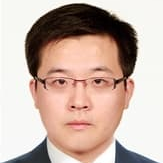Symmetry in High Voltage and Insulation Technology
A special issue of Symmetry (ISSN 2073-8994). This special issue belongs to the section "Engineering and Materials".
Deadline for manuscript submissions: 31 August 2024 | Viewed by 3627

Special Issue Editors
Interests: high-frequency electromagnetic transient; applied electromagnetics; plasma discharge simulation; high-voltage power equipment monitorin
Interests: engineering electromagnetic field; high frequency transformer; iron core material
Special Issue Information
Dear Colleagues,
The subject of high voltage and insulation technology aims to provide technical support for the safe and economic operation of power systems in the design of high-performance environmentally friendly insulation materials, state perception of power equipment, and overvoltage suppression.
Nowadays, under the complex background of UHV transmission construction, deep integration of cyber-physical systems, large-scale grid connection of renewable energy, and harsh electromagnetic operating environment of power equipment, high-voltage disciplines are facing unprecedented challenges.
The corresponding key research areas include, but are not limited to, dielectric insulation properties under extreme conditions or multi-physics, new material sensing technology, multi-information smart device monitoring, high-voltage and high-power DC breaking technology, non-linear behavior mechanisms of discharge plasma, and sub-nanosecond and nanosecond pulse discharge mechanisms. A very important investigation strategy is seeking the symmetry in between the modelling description and the experimental verification for fundamental theories in these areas in order to achieve comprehensive understanding.
This planned issue of Symmetry aims to encourage scholars to carry out research on high voltage and insulation technology in the above context and to submit their research reports in this interesting field, thereby showing the great significance of new ideas. Papers that employ the symmetry or asymmetry concept in their methodologies in the fields of High Voltage and Insulation Technology are welcomed. We also welcome scholars in related fields to contribute their latest research results to this Special Issue.
Prof. Dr. Li Zhang
Prof. Dr. Liang Zou
Dr. Ying Sun
Guest Editors
Manuscript Submission Information
Manuscripts should be submitted online at www.mdpi.com by registering and logging in to this website. Once you are registered, click here to go to the submission form. Manuscripts can be submitted until the deadline. All submissions that pass pre-check are peer-reviewed. Accepted papers will be published continuously in the journal (as soon as accepted) and will be listed together on the special issue website. Research articles, review articles as well as short communications are invited. For planned papers, a title and short abstract (about 100 words) can be sent to the Editorial Office for announcement on this website.
Submitted manuscripts should not have been published previously, nor be under consideration for publication elsewhere (except conference proceedings papers). All manuscripts are thoroughly refereed through a single-blind peer-review process. A guide for authors and other relevant information for submission of manuscripts is available on the Instructions for Authors page. Symmetry is an international peer-reviewed open access monthly journal published by MDPI.
Please visit the Instructions for Authors page before submitting a manuscript. The Article Processing Charge (APC) for publication in this open access journal is 2400 CHF (Swiss Francs). Submitted papers should be well formatted and use good English. Authors may use MDPI's English editing service prior to publication or during author revisions.
Keywords
- Environmentally friendly insulation materials
- Dielectric insulation
- Pulse power and discharge plasma
- Overvoltage suppression
- High-voltage power equipment
- Electromagnetic compatibility
- Plasma diagnostic techniques
- Interaction between plasma dielectric materials







